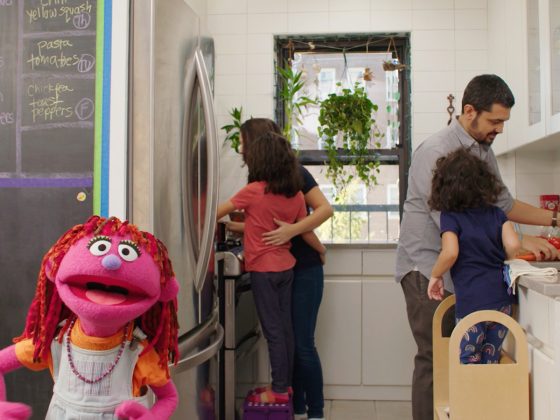
Making Leftovers Last: The Alicea-Eiras Family
A video about a family’s healthy habits.
Watch the video together with children. Notice how the family plans and then “stretches” their groceries to make many different meals over the course of the week. Afterward, you might:
Think about how you plan your family meals.
- Talk together about some of your family’s favorite foods that might be used to make different meals (besides beans, one of the Alicea-Eiras family’s favorites is tomatoes, which can be used for salsa, sauces, salads, sandwiches, soups, and pizza.
- Talk with kids about your shopping list, like the family does. Make the list together, like the Alicea-Eiras family did (you don’t need a chalkboard, just a piece of paper)!
- Before shopping, keep in mind that you can use WIC benefits for free milk and cheese, so you can save SNAP dollars for other items. You can also check out WIC’s farmers markets program to find a farmers market near you that accepts benefits, and plan to do some of your weekly shopping there.
Find learning opportunities when you’re grocery shopping with kids.
- For instance, you might ask, “Will you choose three peppers?” Or you might say, “Healthy rainbow hunt! How many colors of fruits and vegetables can you find?” “Let’s cross this off our list…what’s next?” and so on.
- Show older children nutrition labels and explain that they have important information on how healthy the food inside is. Explain that the names of healthy foods are easier to read and pronounce (and notice if sugar is listed near the beginning of the ingredient list).
- Look around and point out the difference between whole foods and processed foods. Whole foods are fruits, vegetables, nuts, beans and legumes, and whole grains (like brown rice, oats, or barley). Processed foods come in packages, and they’ve had other things added to them, like salt, sugar, or fat. Not all processed food is unhealthy, but whole foods are usually healthier than processed. Challenge kids to find the whole foods around them in the store (you might explain that those are foods that have had nothing added to them, like fruits or vegetables).
Involve children in preparing food.
- Even small children can wash vegetables, chop soft foods with plastic knives, stir ingredients, and arrange vegetables on a tray for roasting (try a “roasting a rainbow” like the Alicea-Eiras family did). Explain that your family is a healthy team, and everyone on the team has a job! (Children can help set the table, too.)
- When you’re cooking, invite children to notice how food changes when it’s cooked, like the roasted vegetables. Children may prefer them cooked—they’re a little sweeter! Model using your five senses to really notice the food you’re eating: Describe its color, texture and shape. If you’re eating with your hands, how does it feel—soft, hard, cool, warm? Close your eyes and smell it. Notice its sound as you take a bite, and, of course, notice the taste!
Store leftovers and stretch out ingredients!
- Used take-out containers and self-sealing bags work well for saving food. Store them in the freezer (you can often rinse the bags out and reuse).
- Find opportunities to cut down on waste (for instance, if you use a stalk of celery in a recipe, cut up the rest of the bunch for a snack later).
Special thanks to Stacey Alicea.
These are great as leftovers, too! To make at least 4 servings, start with:
- 500 g pork shoulder (or any meat of your choice), cut into small cubes
- 1 tablespoon olive oil
- ¼ cup tomato sauce
- 2 tablespoons sofrito sauce
- 1 packet sazon seasoning
- ¼ teaspoon black pepper
- 1 cup canned pinto beans, drained (or 1 cup of dried beans, soaked overnight and rinsed)
- 1 ½ cups water
- Salt to taste
- 1 or 2 dry bay leaves
- 2 medium or 3 large potatoes, chopped
- In a large, deep pot, heat olive oil on medium heat.
- Add the meat, season with salt and pepper, and stir occasionally for 5-10 minutes as it browns.
- Lower heat and add sofrito, tomato sauce, and sazon. Stir occasionally until it starts to smell good, and the colors begin to change.
- Add beans, water, bay leaves, and olives (optional). Turn heat to high until it boils.
- Lower heat and let simmer, cooking for at least an hour with the lid slightly open. Check for taste and add seasoning as desired.
- Add potatoes; cook another 20 minutes (slightly covered). Once potatoes are fork tender, mash a few of them with a fork so the mixture will thicken.
- Serve with rice and enjoy!
And…
- Use leftover beans to make tacos or quesadillas the next day.
- Put into smaller containers and freeze for anytime.
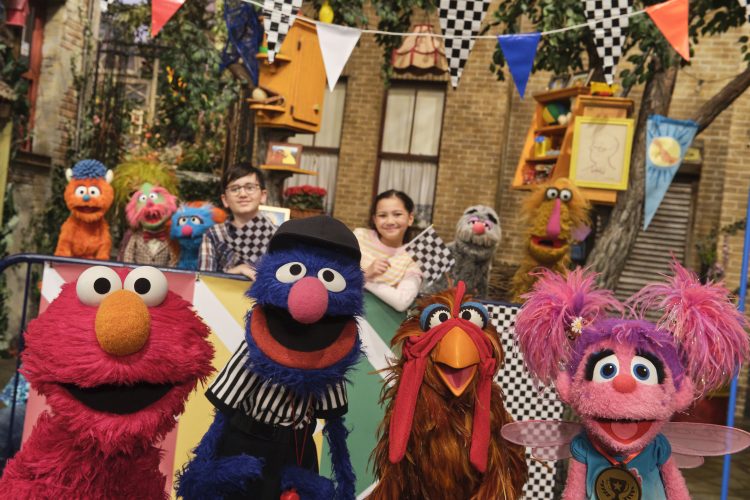
Watch and Play: Elmo Runs the Race
Watch this episode and explore ways to extend the learning at home.
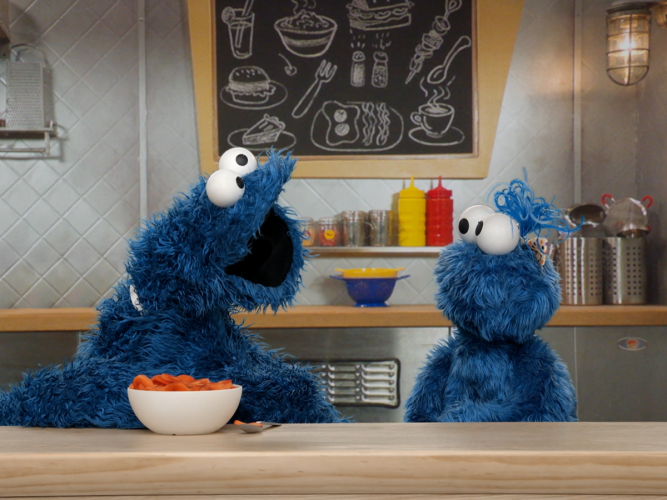
To Like or Not to Like
Like most children, Cookie Monster’s niece is a little… choosy. Check out his strategy for helping her try a new food!
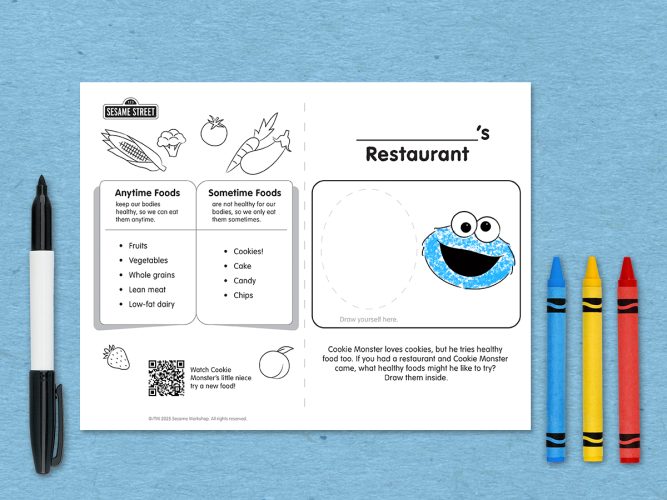
Choosy Eating
Children can help Cookie Monster try healthy foods.
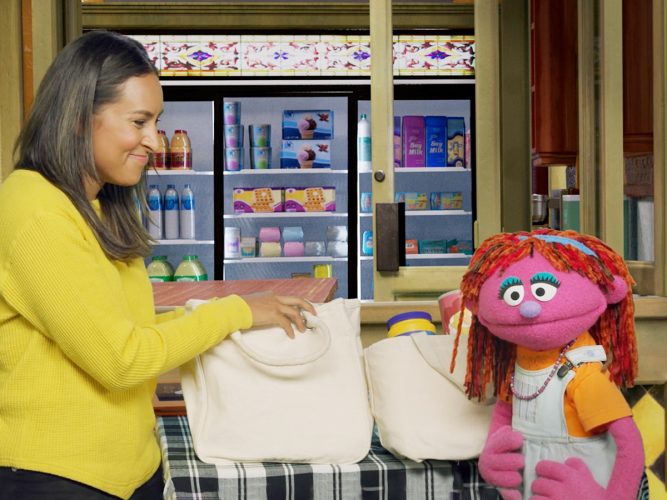
Food Insecurity
Health and well-being are rights for all children, but food insecurity affects many families.
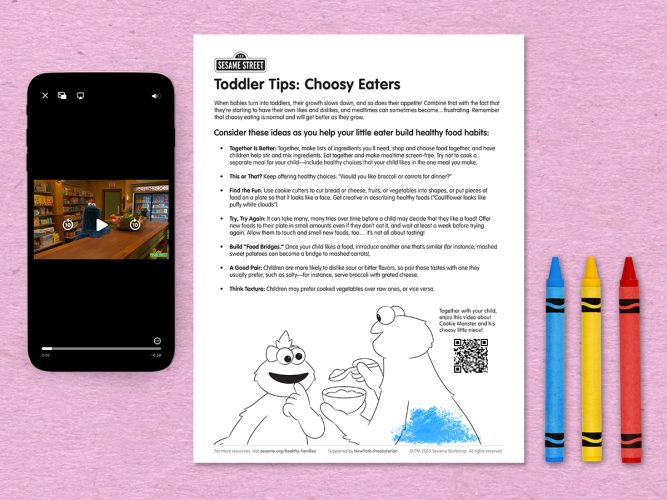
Toddler Tips: Choosy Eaters
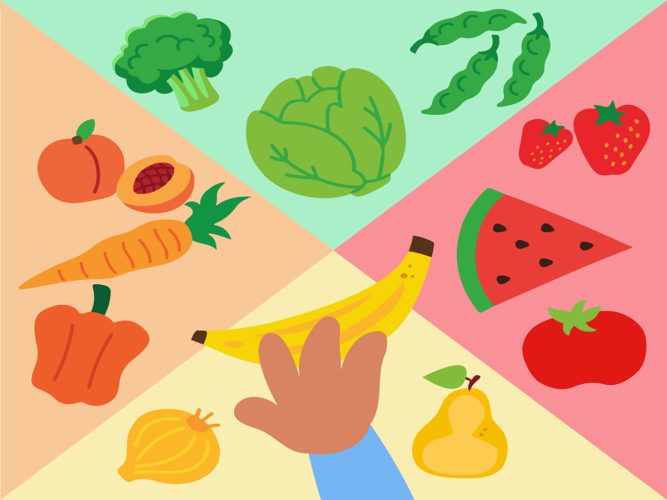
Growing Healthy Bodies and Minds with Sesame Street
In this webinar, Sesame Workshop’s Kama Einhorn, Director of Content Design, and Dr. Jennifer Shu, Medical Editor of HealthyChildren.org discuss the importance of healthy habits for young children and families.
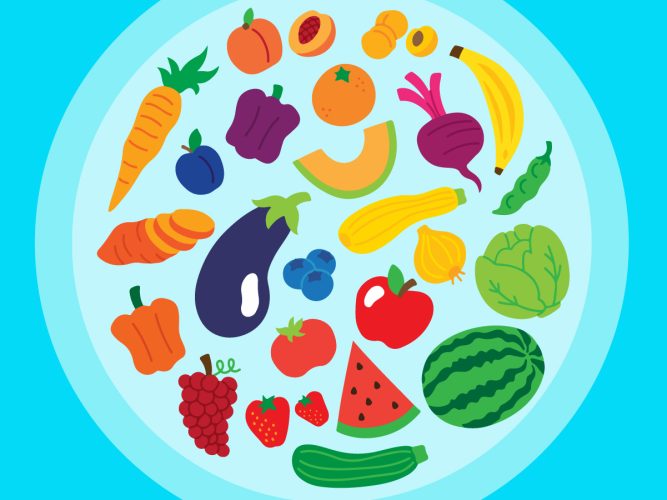
A Conversation on Healthy Habits
In this webinar, Sesame Workshop’s Kama Einhorn, Director of Content Design, and Dr. Glenn Flores, Chair of Pediatrics and Senior Associate Dean of Child Health at the University of Miami, discuss the importance of healthy habits for young children and families.
